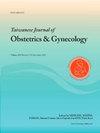利用生物信息学分析和机器学习探索不明原因不孕症的免疫相关诊断生物标志物
IF 2.2
4区 医学
Q2 OBSTETRICS & GYNECOLOGY
引用次数: 0
摘要
目的探讨与尿失速相关的生物标志物及其与免疫细胞浸润的关系。材料和方法GSE165004数据集取自Gene Expression Omnibus, IRGs数据集取自import和InnateDB数据库。使用差异表达分析、WGCNA和三种机器学习算法(LASSO、SVM和随机森林)来确定UI的免疫相关中心生物标志物。在GSE165004和验证集(GSE16532)中评估这些标记物的诊断性能。单样本GSEA分析免疫细胞浸润水平,Spearman分析生物标志物与免疫细胞的相关性。探讨了每种生物标志物的功能富集和潜在药物。生物标记基因在临床样品中进行实时PCR验证。结果通过整合分析鉴定出6个共有基因(ANXA2、CD300E、IL27RA、SEMA3F、GIPR和WFDC2)作为诊断性生物标志物。ROC分析显示,这些标记在训练集和验证集对UI都有诊断价值。此外,这些生物标志物与免疫细胞密切相关,如自然杀伤T细胞和效应记忆CD8 T细胞。GSEA分析显示,这些基因主要参与染色体和线粒体相关的生物学功能。药物预测表明所有基因靶向苯并(a)芘。与对照组相比,除GIPR外,所有生物标志物基因在尿失禁患者子宫内膜组织中的表达均存在差异。结论本研究确定了尿失禁免疫相关的诊断生物标志物,为理解尿失禁的分子机制和治疗靶点提供了新的见解。本文章由计算机程序翻译,如有差异,请以英文原文为准。
Exploration of immune-related diagnostic biomarkers in unexplained infertility by bioinformatics analysis and machine learning
Objective
We aimed to discover the biomarkers associated with UI and their correlation with immune cell infiltration.
Materials and methods
The GSE165004 data set was extracted from the Gene Expression Omnibus and IRGs were obtained from Immport and InnateDB databases. Differential expression analysis, WGCNA, and three machine learning algorithms (LASSO, SVM, and random forest) were used to determine the immune-related hub biomarkers for UI. The diagnostic performance of these markers was evaluated in GSE165004 and validation set (GSE16532). Furthermore, single-sample GSEA was employed to analyze the infiltration level of immune cells and Spearman analysis was conducted to assess the correlation between biomarker and immune cells. The functional enrichment and potential drugs for each biomarker were explored. The biomarker genes were validated in clinical samples by real time PCR assay.
Results
Six shared genes (ANXA2, CD300E, IL27RA, SEMA3F, GIPR, and WFDC2) were identified as diagnostic biomarkers by integration analysis. ROC analysis revealed that these markers had diagnostic value for UI both in training and validation sets. Moreover, these biomarkers are closely associated with immune cells, such as natural killer T cells and effector memory CD8 T cells. GSEA analysis showed that these genes were mainly involved in chromosome and mitochondria-related biological functions. Drug prediction indicated that all genes targeted Benzo(a)pyrene. All the biomarker genes, expect for GIPR were differentially expressed in endometrium tissues of UI patients, compared with controls.
Conclusion
This study identified immune-related diagnostic biomarkers in UI, providing new insights into understanding the molecular mechanisms and therapeutic targets of UI.
求助全文
通过发布文献求助,成功后即可免费获取论文全文。
去求助
来源期刊

Taiwanese Journal of Obstetrics & Gynecology
OBSTETRICS & GYNECOLOGY-
CiteScore
3.60
自引率
23.80%
发文量
207
审稿时长
4-8 weeks
期刊介绍:
Taiwanese Journal of Obstetrics and Gynecology is a peer-reviewed journal and open access publishing editorials, reviews, original articles, short communications, case reports, research letters, correspondence and letters to the editor in the field of obstetrics and gynecology.
The aims of the journal are to:
1.Publish cutting-edge, innovative and topical research that addresses screening, diagnosis, management and care in women''s health
2.Deliver evidence-based information
3.Promote the sharing of clinical experience
4.Address women-related health promotion
The journal provides comprehensive coverage of topics in obstetrics & gynecology and women''s health including maternal-fetal medicine, reproductive endocrinology/infertility, and gynecologic oncology. Taiwan Association of Obstetrics and Gynecology.
 求助内容:
求助内容: 应助结果提醒方式:
应助结果提醒方式:


